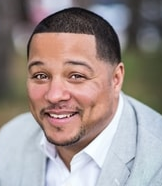When it comes to communicating your safety goals to an entire organization, do you know how to “tip your message”? This idea of the tipping point, defined by author Malcolm Gladwell as “the moment of critical mass, the threshold, the boiling point,” can be hugely beneficial when initiating safety culture within your organization. This idea consists of identifying the three types of people in your organization who will help spread the message and launch buy-in from all departments.
Your Connectors are the people in your organization with influence across different departments who can introduce and bring people together and spread the message beyond just risk management. Your Mavens are information specialists in your organization—those who others rely on for problem-solving and trusted information. They add credibility to your safety goals. Your Salespeople are the influencers in your organization with excellent negotiation skills. They help sell your ideas and messaging across all departments. Together, these three types of people can be instrumental in tipping your safety message.
Leveraging the unique individual strengths that exist within your safety team is key to understanding how they support your goals. For example, an artistic personality could design your safety posters and logos. An analytical type could ask for opinions from employees on how to improve safety-related work processes and use that information to identify improvement opportunities. Someone who challenges typical conventions could effectively persuade others, knowing what it took to buy into a new and different idea.
After identifying your safety allies in your organization, consider the “law of the few”—that is, how to build your safety action team from these allies. After creating your team, find the “stickiness factor,” and narrow your message, making it original and engaging. You want it to be simple enough to understand and stick with your intended audience. Using the “power of context,” know how you are communicating your message using your safety team. What communication tools are used to send the message? Are they relaying the message with its intended purpose? How is it being perceived across the organization?
Every department will perceive safety’s impact differently, so translating the message through your safety allies is critical to its success. Do stakeholders understand how safety impacts them? Do they know how they can show visible support? Do they know what they can do to impact safety goals? For example, if you are discussing your goals with the marketing and business development teams, explain how the company’s safety record could affect your reputation, both internally and externally, and how an exceptional safety record could be a beneficial marketing tool. Explain how a poor record could lead to loss of business and increased turnover. Connecting each department’s goals with the impacts of safety factors on their overall success drives change.
One of the most critical factors to engaging employees is listening and acting upon their feedback. The best way to incorporate change is to understand where the transformation begins. Have you asked how your employees feel about the current safety climate? Do they think their input is valued or generally ignored? By lifting their voices and displaying your genuine commitment to their insights, you can empower them to initiate decisive changes that make your organization safer in the long term.
 Webinar Sneak Peek: A Q&A with Maryann Hoff, CSP, ARM, MEHS, and Stephen Moore
Webinar Sneak Peek: A Q&A with Maryann Hoff, CSP, ARM, MEHS, and Stephen Moore
Ahead of their July 28 webinar, Beyond Compliance: Engaging Employees to Achieve Safety Excellence, Maryann Hoff and Stephen Moore discuss why now is the time to gain employee buy-in and trust for your safety program efforts.
Why is this topic important?
Without engaged employees, a safety program cannot progress beyond top-down compliance to become a strong and sustainable safety culture where all are accountable. Therefore, instead of safety being a one-person operation, everyone understands why it is critical.
Why is it an important time to address employee engagement and its correlation to safety?
As employees return to work after significant disruptions to their normal routines, reestablishing engagement with their organization’s safety culture is important to reinforcing safe work behaviors and valuable lines of communication.
What are some signs of disengaged employees? How do you know if you have a problem?
Disengaged employees do not openly communicate safety concerns or voice their ideas for improving the safety climate. Frequent tardiness and absenteeism are also indicators. You know you have a problem when it affects day-to-day operations and employees are not invested in the success of the organization.
Why are you passionate about this subject?
Toxic work cultures where employees are disengaged with safety create a spillover effect. Studies have shown that high stress in the work environment spills over into family life and affects how children perform. For us, it transforms not just our lives but also the lives of our children.
To learn more, join Maryann Hoff and Stephen Moore for their live webinar, Beyond Compliance: Engaging Employees to Achieve Safety Excellence, taking place on Tuesday, July 28, 2020, from 1:30 p.m. to 3:00 p.m. Eastern/10:30 a.m. to 12:00 p.m. Pacific. This all-new webinar will provide key insights into the organizational factors that can bolster or harm employee motivation, the optimal balance between incentives and consequences to support your safety culture, and strategies to gain buy-in and trust for your safety program. Register here today!
|
Hoff joined Safety National in 2018 as a Senior Risk Control Manager. Before joining Safety National, she held various risk control consulting positions for national and regional insurance carriers. Hoff has served as a member of the Small Business Risk Education Initiative and is actively involved with the American Society of Safety Professionals (ASSP) and Women in Safety Excellence (WISE). Hoff holds Associate Risk Management (ARM) and Certified Safety Professional (CSP) designations. She obtained her Master of Environmental Health and Safety degree and Bachelor of Science degree in Chemical Engineering from the University of Minnesota. |
|
Moore is a certified DISC practitioner, a sought-after transformational speaker, and an author. He is currently writing his first book, The Seven Core Factors of Culture, written to help managers and leaders actualize employee engagement as a competitive advantage. Moore holds a Bachelor of Arts degree in Social Studies, with a minor in Multicultural Education, from Metropolitan State University. |


 Maryann Hoff, CSP, ARM, MEHS, is Senior Risk Control Manager at Safety National, where she is responsible for managing risk control services for a portfolio of policyholders. She also serves as the Risk Services Healthcare Industry Practice Lead for the East Coast.
Maryann Hoff, CSP, ARM, MEHS, is Senior Risk Control Manager at Safety National, where she is responsible for managing risk control services for a portfolio of policyholders. She also serves as the Risk Services Healthcare Industry Practice Lead for the East Coast. Stephen Moore is the Founder of The Ovation Group, a boutique consulting firm based in St. Paul, Minnesota, that helps teams reach sustainable profitability and growth. Moore is also the cofounder of Culture Booster, a software platform that features familiar tools like real-time surveys, benchmarking, and goal formation. Moore has excelled in the retail automotive industry for nearly two decades, working directly with and for dealerships across the nation. He specializes in working with leaders to help increase revenue, build effective teams, and develop frontline management through leadership development, communication, and onboarding programs.
Stephen Moore is the Founder of The Ovation Group, a boutique consulting firm based in St. Paul, Minnesota, that helps teams reach sustainable profitability and growth. Moore is also the cofounder of Culture Booster, a software platform that features familiar tools like real-time surveys, benchmarking, and goal formation. Moore has excelled in the retail automotive industry for nearly two decades, working directly with and for dealerships across the nation. He specializes in working with leaders to help increase revenue, build effective teams, and develop frontline management through leadership development, communication, and onboarding programs.